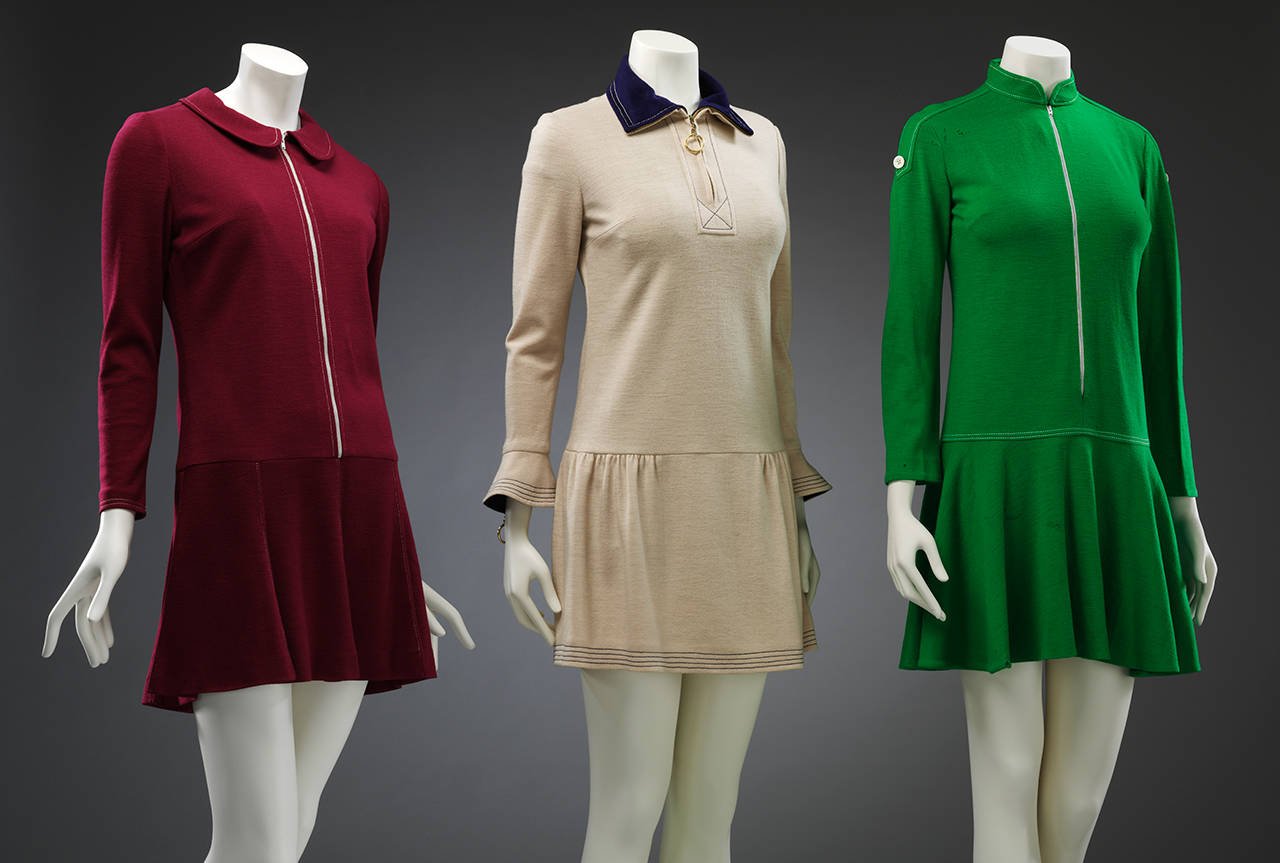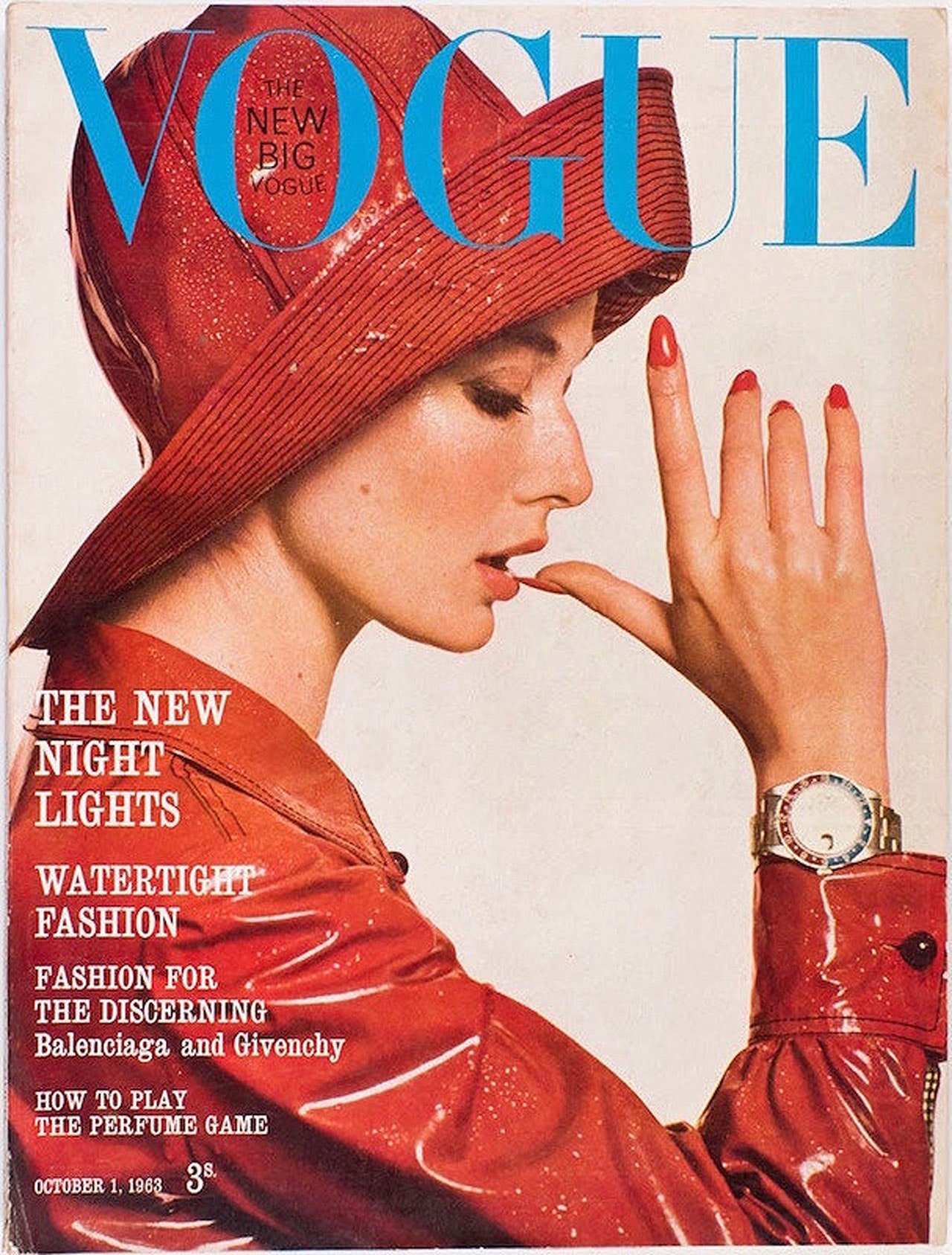Made in Chelsea Pt.1: Mary Quant & her bazaar of earthly delights
Jersey Dresses.
Is she showing off the Honour or the dress?
At the height of the Swinging 60s, Mary Quant's Bazaar boutique reigned supreme on King's Road. She did not invented all of the fashion innovations attributed to her, but she popularised a range of novel garments and creatively experimented with new materials, at times breaking gender conventions and pushing the boundaries.
The 60s was a decade which saw incredible cultural and social change in Britain. The austerity of post war Britain was receding, the economy was growing and the welfare state had addressed many of the socials woes that plagued Victorian and Edwardian Britain. The new contraceptive pill, had given women new freedoms and options to pursue professional careers and Mary Quant’s clothing celebrated this new sense of liberation, designing garments which would empower women and allow women to dance, run and hop on a moving Routemaster.
Many of Quant’s designs would have been unthinkable, a generation earlier, but are still influencing women's clothing to date and I must admit, knowing little about women’s fashion, when I see her designs, they still look fresh and visually appealing. It is also a truism that whenever I mention Mary Quant, on my King’s Road walk, all my female guests get really excited.
Beats a Barbour…
Quant is most famous for miniskirts and hot pants, but she was responsible for many more striking and lasting designs. One of her most iconic are her Jersey dresses. These were made of 100% wool single-knitted jersey, heat-bonded to an acrylic-knitted backing. They were cheap to produce and could be redesigned in hundreds of different permutations. A keen marketer, to everyones bewilderment, Quant showed up in one of her Jersey dresses to receive her OBE in 1966.
Stockings had been used since the Victorian period, but were typically black and uncomfortable to wear, held above the knee by metal contraptions. With a partner company, Quant developed a technique of making long stockings which joined together at the top, and these could be coloured in a variety of bright dyes. They were the perfect complement for her shorter than ever miniskirts. These, she did not invent, but popularised and candidly admits, that she was responding to her customer’s demands. Shorter, shorter, shorter!
Quant was not just interested in stripping away as much cloth as she could from the female figure. She was one of the first designers to promote trousers and suits as fashionable womenswear. By the looks of it, it seems that the Chelsea Pensioners approved! See photo below.
Always interested in new materials, Quant was so inspired by PVC material, 'this super shiny man-made stuff and its shrieking colours… its gleaming liquorice black, white and ginger', that she designed a whole range called the 'Wet Collection'. This was so popular it secured her first front cover of British Vogue in 1963.
Besides wealth and worldwide recognition Quant, was made a Dame Commander of the British Empire. She is retired, but still retains ownership of Mary Quant Limited. I have covered just a few of her products, which range from cosmetics to furniture. An unofficial plaque memorialising Quant's Bazaar boutique can be found above Joe & the Juice, at No. 138 King's Road. You can find some of Mary Quant’s clothing at the V&A and the Museum of London, which have held past exhibitions of her work.
I wonder what Warrant Officer Rodgers is thinking?





